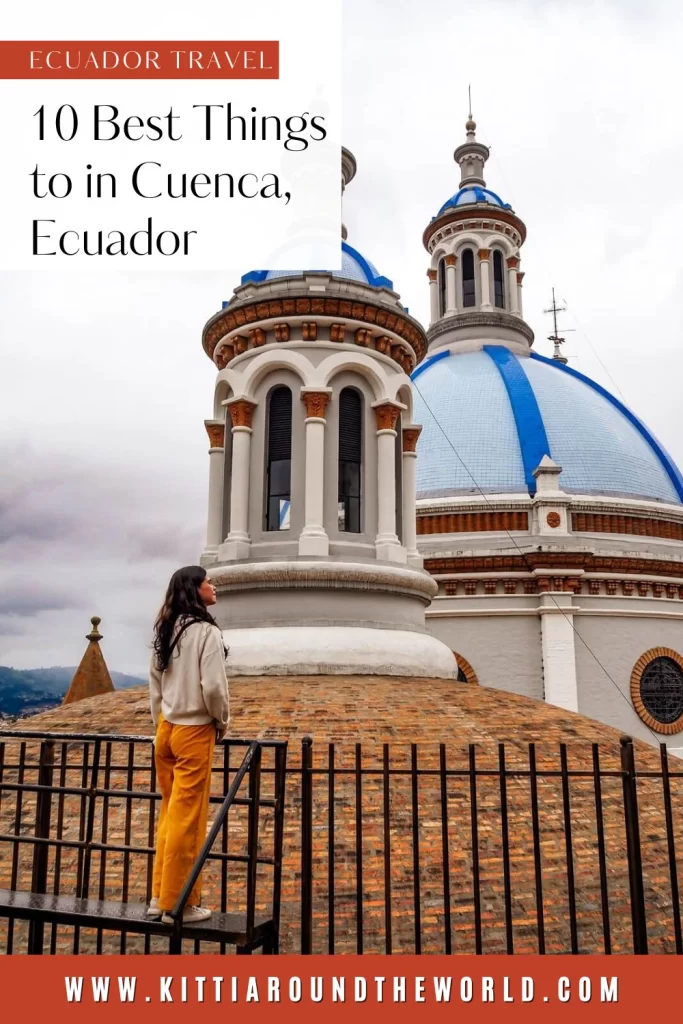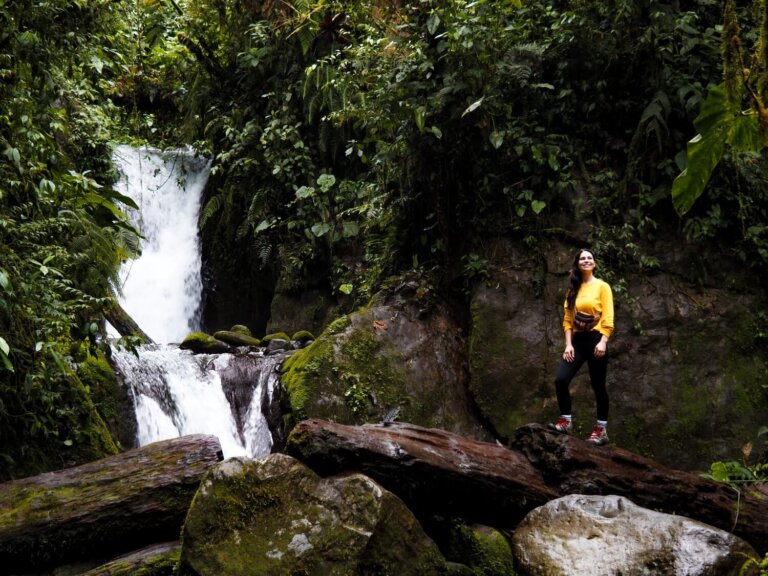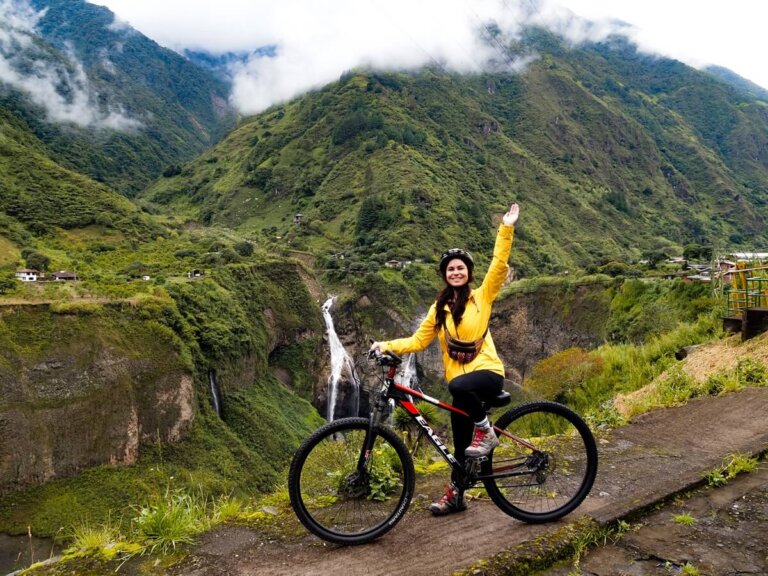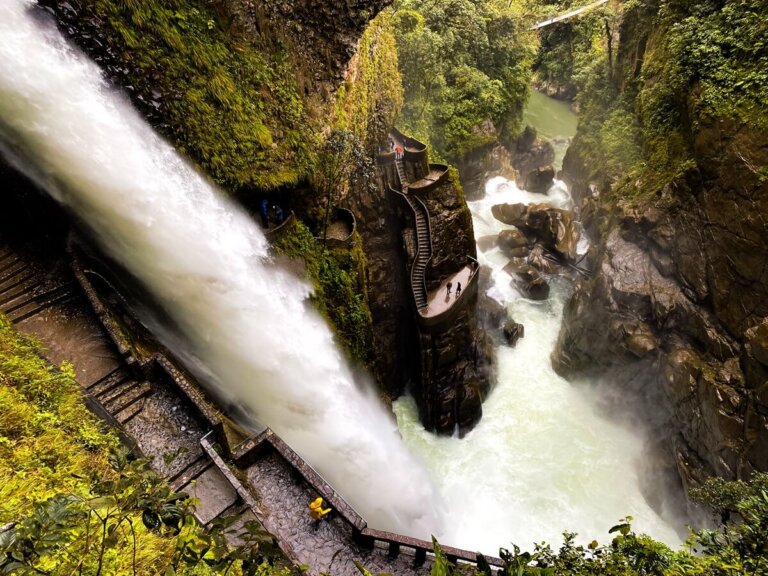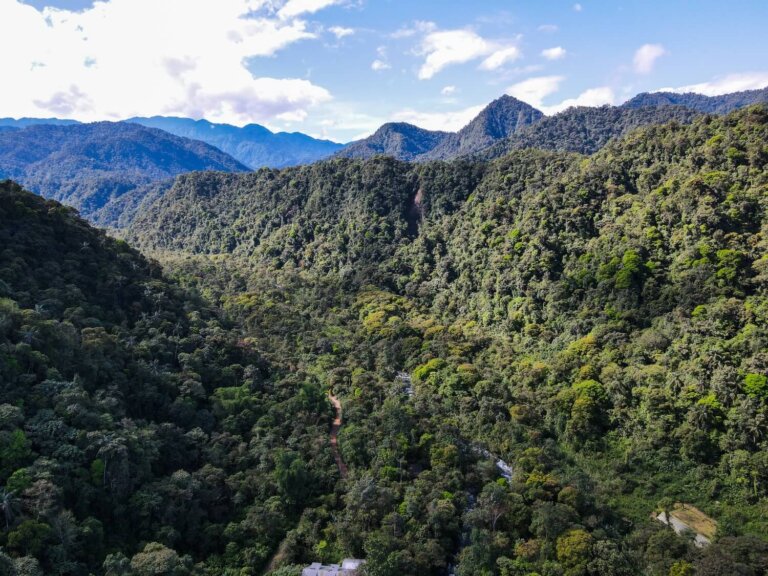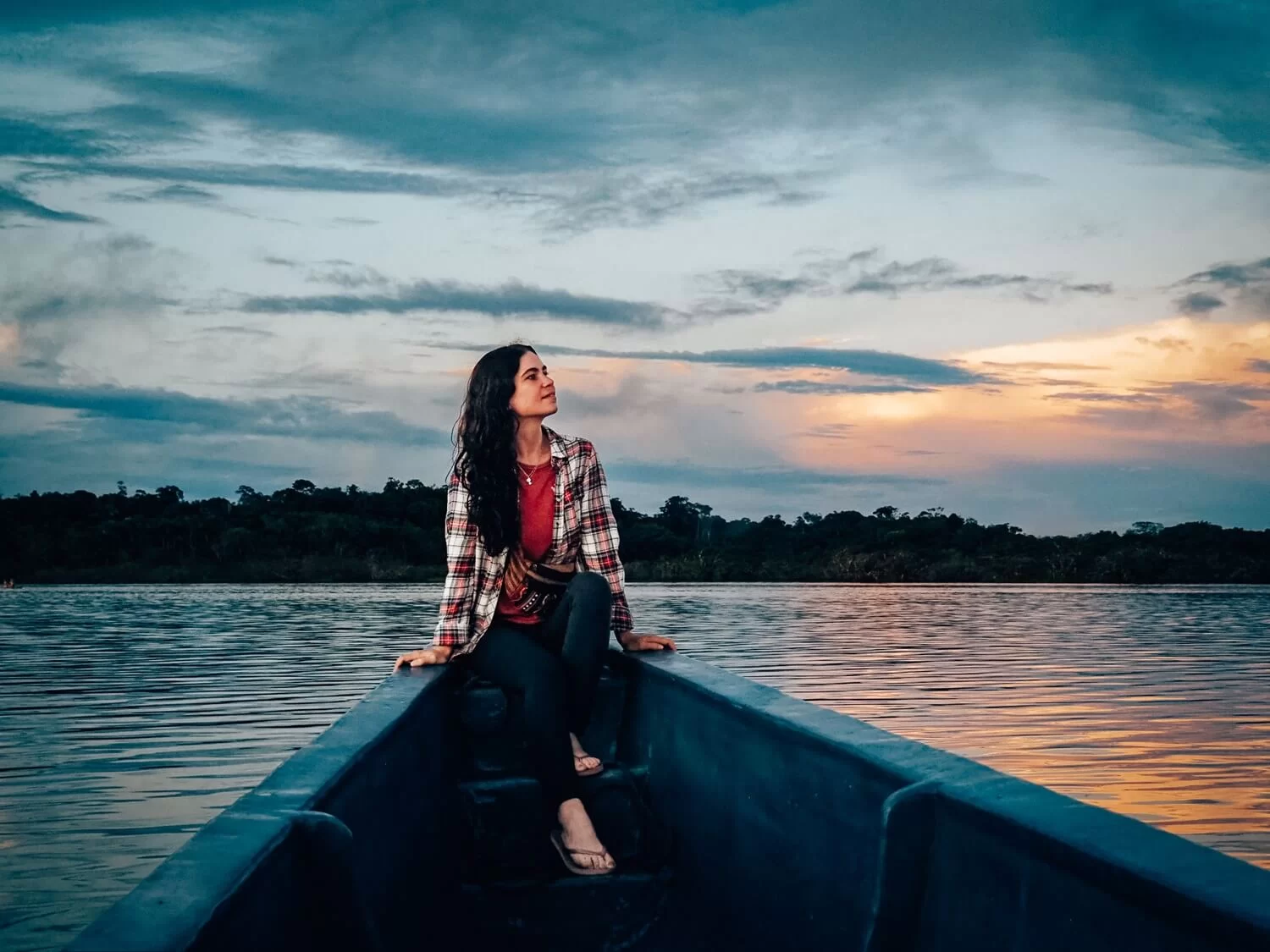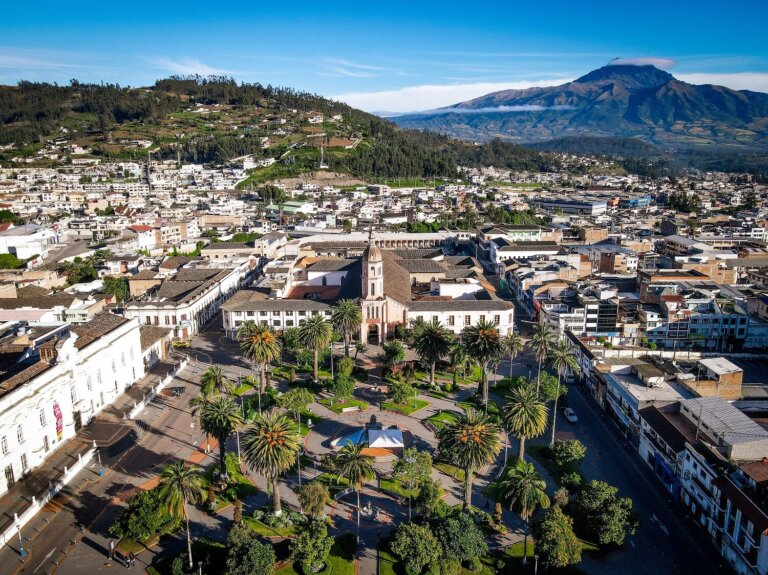10 Best Things to Do in the Historic Centre of Cuenca, Ecuador
In this blog post you can read about everything there is to do in the Historic Centre of Cuenca. From wandering around its cobblestone streets to exploring its markets, admiring its beautiful buildings to enjoying some of its best viewpoints, and visiting a huge Inca ruin before trying some ‘ice cream’ that never melts, Cuenca is filled with things to do.
It is one of the most beautiful cities in Ecuador, so you shouldn’t skip a visit when planning your trip. You could easily spend a full day just visiting its Centro Historico, which is also a UNESCO World Heritage Site. However, there are some fun day trips you can take as well, so definitely plan to spend at least three days in Cuenca.
If you’d like to see what we got up to in the city, then check out our dedicated Cuenca video on our YouTube Channel. For more Ecuador videos check out our Ecuador Playlist.
Disclosure: This post may contain affiliate links, which means we may receive a small commission if you click a link and purchase something. Clicking these links won’t cost you anything, but it will help us to keep this site up and running! Learn more about our affiliate policy.
Introducing Cuenca, Ecuador
Located in the southern part of Ecuador, the beautiful city of Cuenca sits around 2,560 m (8,500 ft) above sea level and is Ecuador’s third-largest city.
Fun Fact – The city’s full name is Santa Ana de los Cuatro Ríos de Cuenca. Yes, that’s quite a mouthful, so it’s no wonder that pretty much everyone just calls it ‘Cuenca’.
If you know a few Spanish words, you’ll notice that its name translates to Santa Ana of the Four Rivers of Cuenca. There are actually four rivers running through the city, one of which crosses the centre.
Cuenca was founded in 1557 as a Spanish settlement. However, evidence shows that people have lived around the Cuenca area since around 8000 BC. If you’ve been to Peru and learned a bit about the Inca’s there, then you’ll probably know that Ecuador was also part of the Inca empire before the Spanish arrived. Huayna Cápac, the last ruler of a unified Inca empire was actually born in Cuenca. Then the Spanish conquistadors arrived in the 1550’s, which is when many of the buildings you can still see today were built. Cuenca regained its independence on the 3rd November 1820.
Thanks to the city’s rich history and colonial architecture, Cuenca was recognized as a UNESCO World Heritage Site in 1999, following in the footsteps of Quito’s historic centre. Today, Cuenca is a beautiful blend of colonial and modern-day facilities and it’s also the economic and cultural centre of the country. It has a very European feel to it, even though you’ll see plenty of locals still wearing their traditional Ecuadorian clothes. For these reasons, many people refer to Cuenca as ‘the Athens of Ecuador’.
Our Top Travel Resources to Visit Cuenca
- 🛏️ Find your accommodations with Booking.com
- 🎫 Book an organised tour in Cuenca with GetYourGuide or Viator
- 📱Get an eSIM with Airalo to be able to use data
- 🛡️ Don’t forget to buy travel insurance via SafetyWing
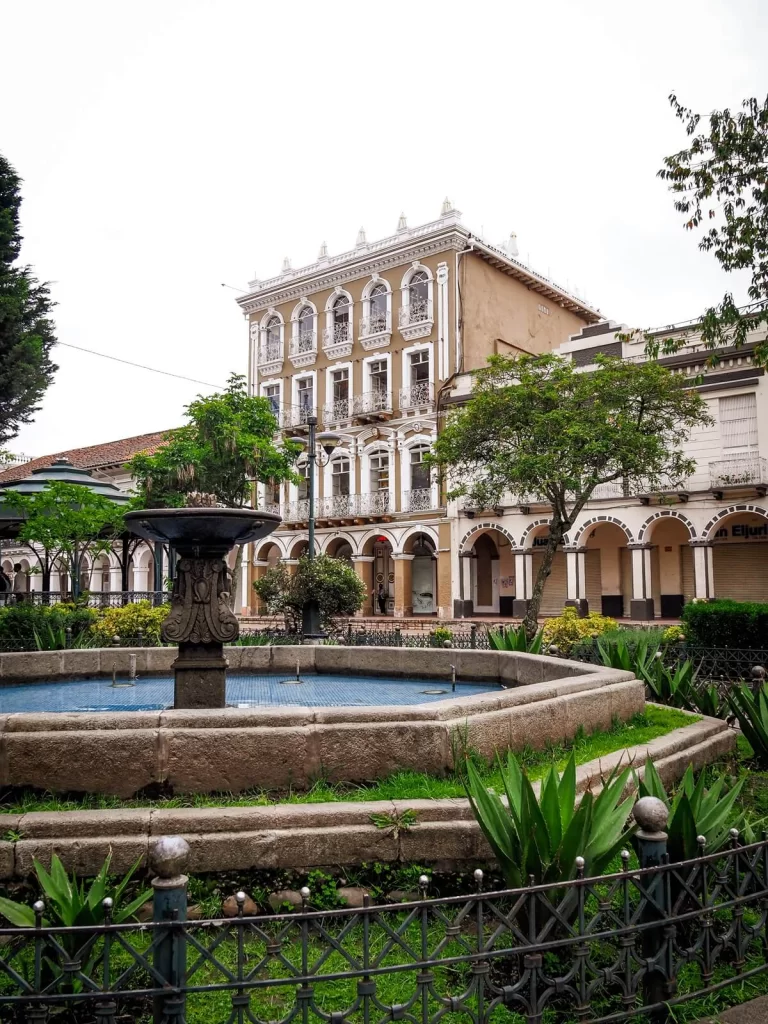

10 Things to Do in the Historic Centre of Cuenca
1. Relax in Parque Calderón
What better place to start exploring the Historic Centre of Cuenca than its main plaza. Calderon park (Parque Calderón) is a lovely green space filled with plants, trees and benches to sit on, where you can people watch and enjoy the beautiful buildings surrounding the square.
In the middle of the plaza is a monument to Abdon Calderon, who was a hero in Ecuador’s fight for independence. There is also a gazebo and fountains. As far as main squares go, Calderon Park feels a little more like you’re in a small oasis than the third biggest city in Ecuador.
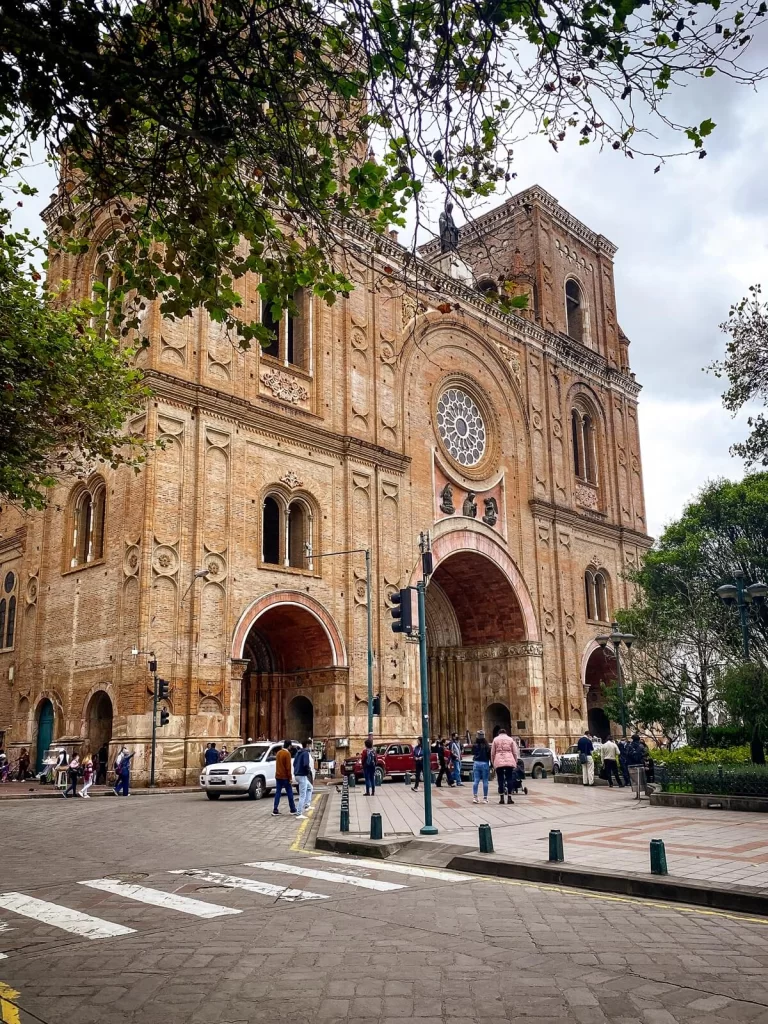
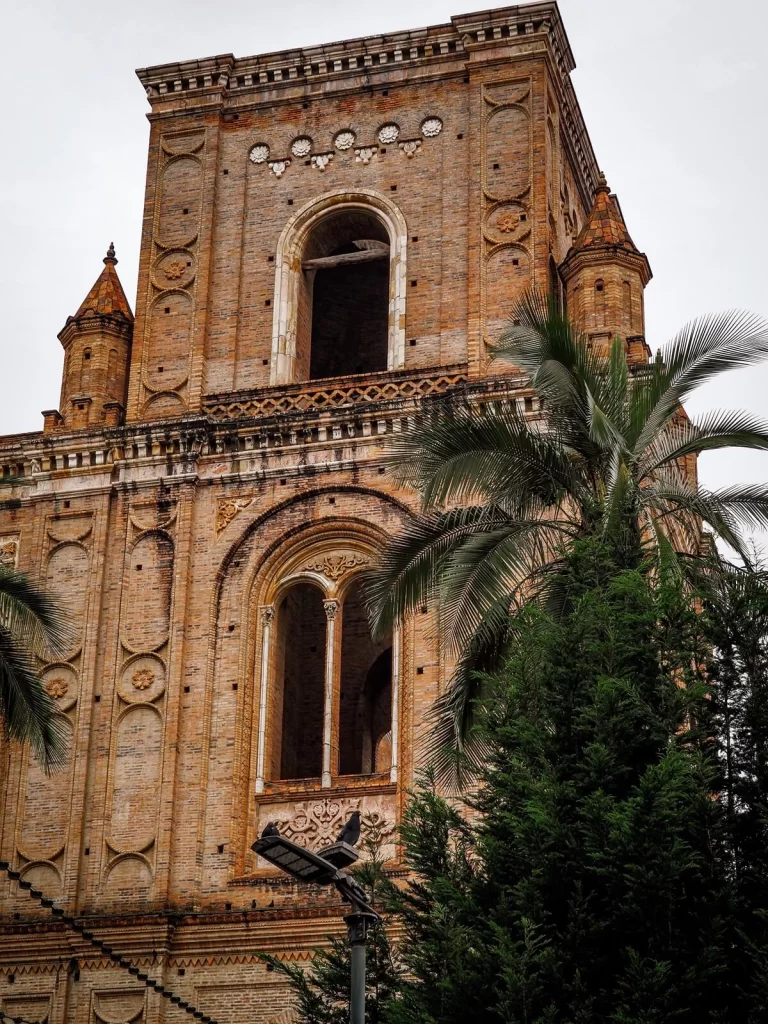
2. Visit Inside Cuenca’s New Cathedral
Once you’ve got your bearings, it’s time to see what’s around the main plaza. One unmissable building you should visit is Cuenca’s New Cathedral. It is considered one of the largest cathedrals in South America.
Construction on Catedral de la Inmaculada Concepción started back in 1885, however it was only completed almost a century later in 1975. This is actually why many still refer to it as the New Cathedral. However, according to the original plans, the cathedral is still considered unfinished.
The most recognisable feature of the cathedral has to be the three giant domes covered in blue and white glazed tiles. These domes have become a symbol of Cuenca’s skyline.
You can visit inside the cathedral, which apparently can fit around 9,000 people. It’s free to enter, just make sure that you wear an appropriate outfit.

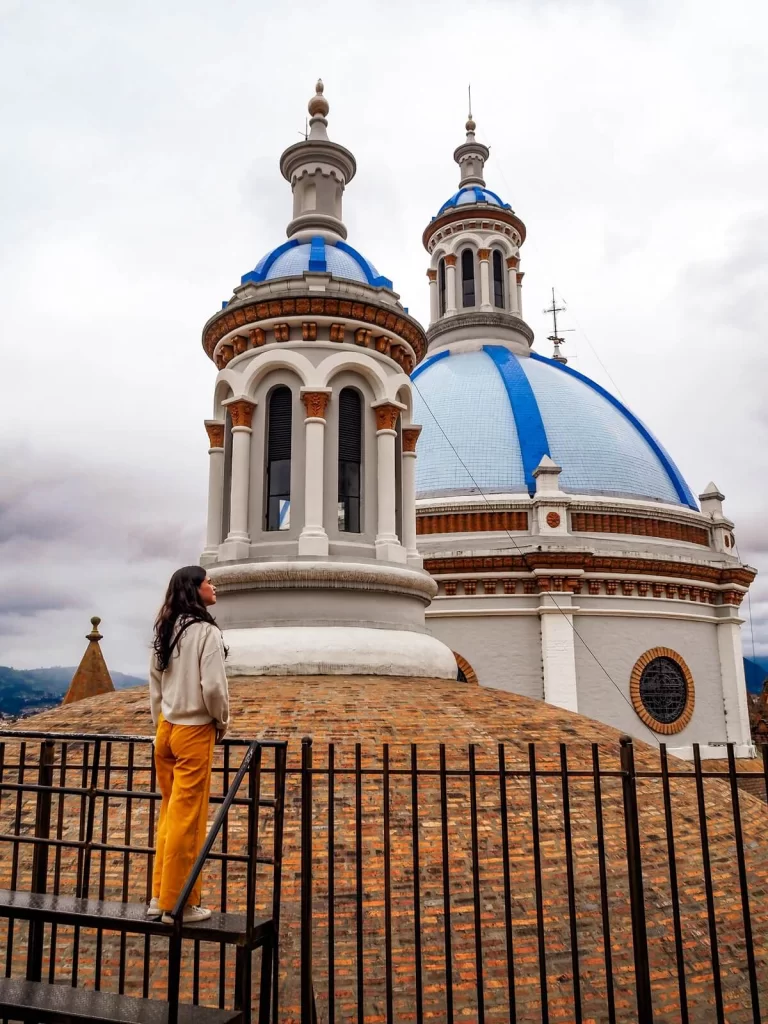
3. Climb Up the Towers of Cuenca’s New Cathedral
One of the top things to do in the Historic Centre of Cuenca is to climb up the towers of the New Cathedral and get a closer look at the massive blue domes.
The steep and windy staircase will take you past a few balconies where you can get a birds-eye view of the main plaza. As you make your way further up, you’ll eventually end up on the viewing platform where you can get some lovely views of the Centro Historico and beyond.
Entry fee: $2 USD per person. The entry to the towers is from Calle Santa Ana (Mirador de las Cúpulas), not from inside the cathedral.
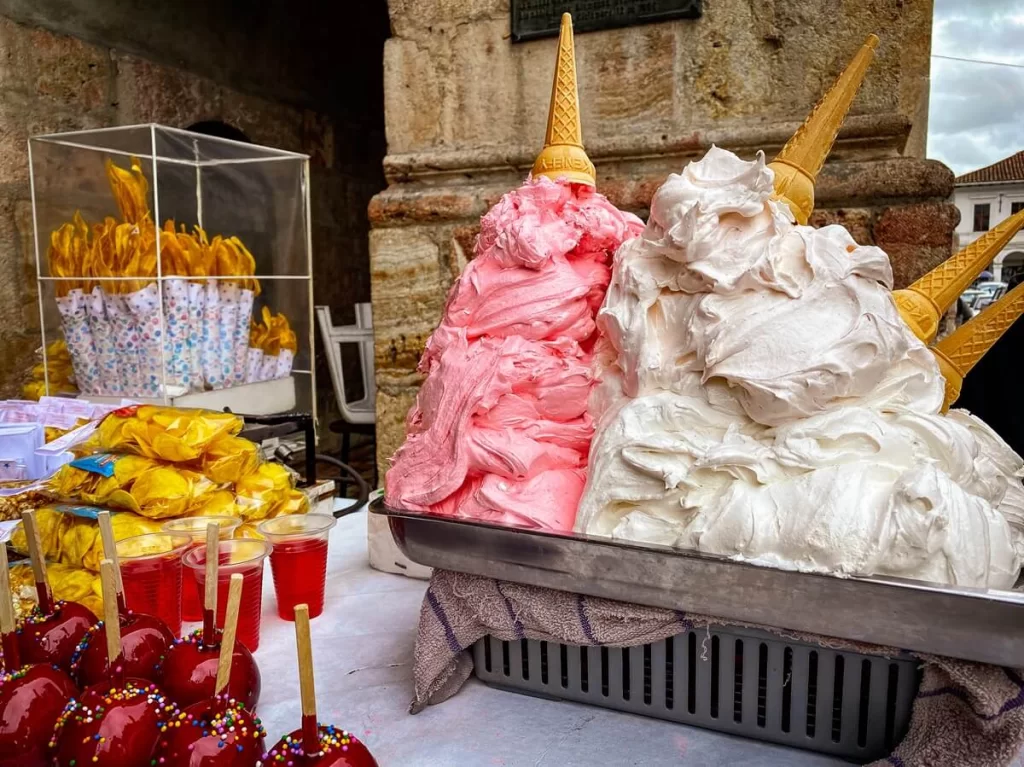
4. Try Espumilla, the Never Melting ‘Ice Cream’
As you walk around Calderon park, you’ll notice some street food vendors selling ‘ice cream’ that isn’t melting despite the heat.
This popular dessert in Ecuador is called ‘espumilla’. The reason it doesn’t melt is because it’s a type of soft meringue instead of traditional ice cream.
With this Ecuadorian sweet treat in your hand, you can take your time eating it without worrying about making a mess as you walk around the Historic Centre of Cuenca. Some of the most popular flavours you can get are guava (guayaba) and blackberry(mora).
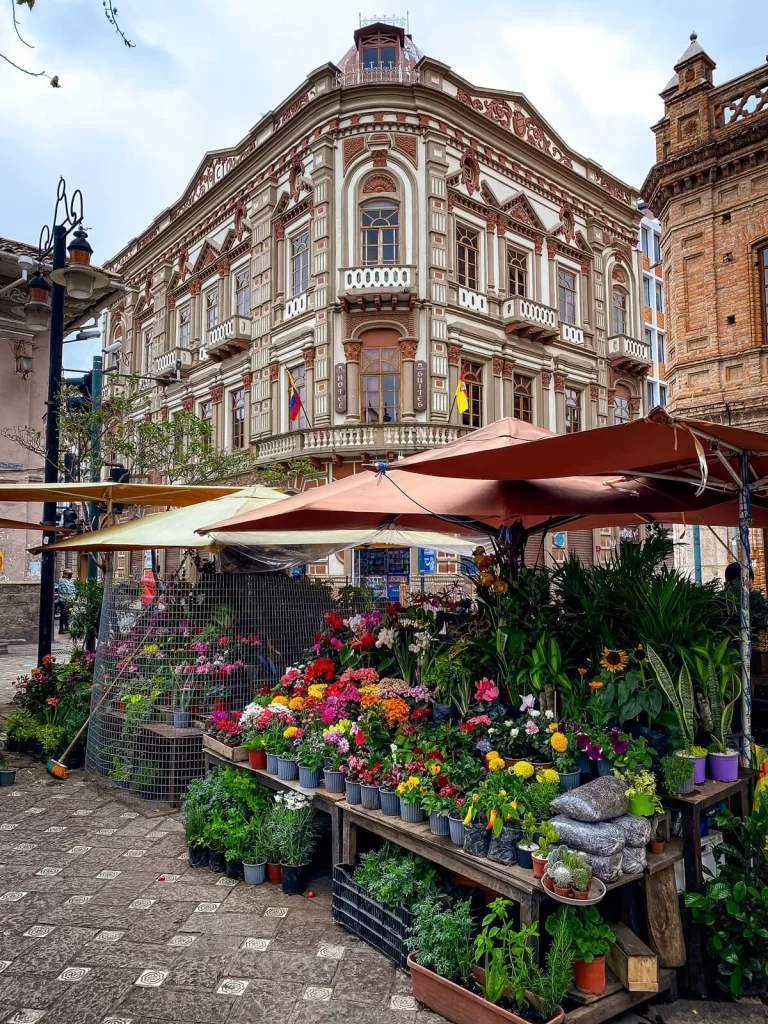
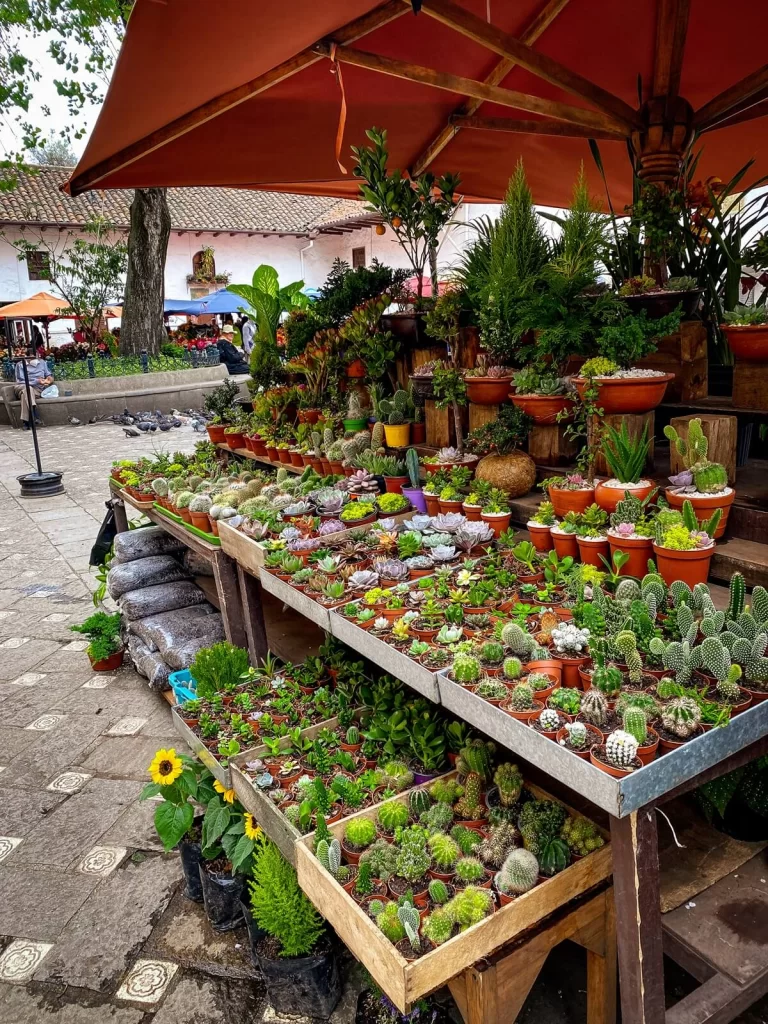
5. Stop at Cuenca’s Flower Market (Mercado de las Flores)
As you wind your way through the Historic Centre of Cuenca, make sure to walk past the flower market. It’s located just in front of Iglesia del Carmen de la Asunción, to the south of the New Cathedral.
Apparently Ecuador is one of the world’s largest exporters of cut flowers. Even though it’s a small market in Cuenca, it’s definitely a colourful one with a lovely atmosphere.
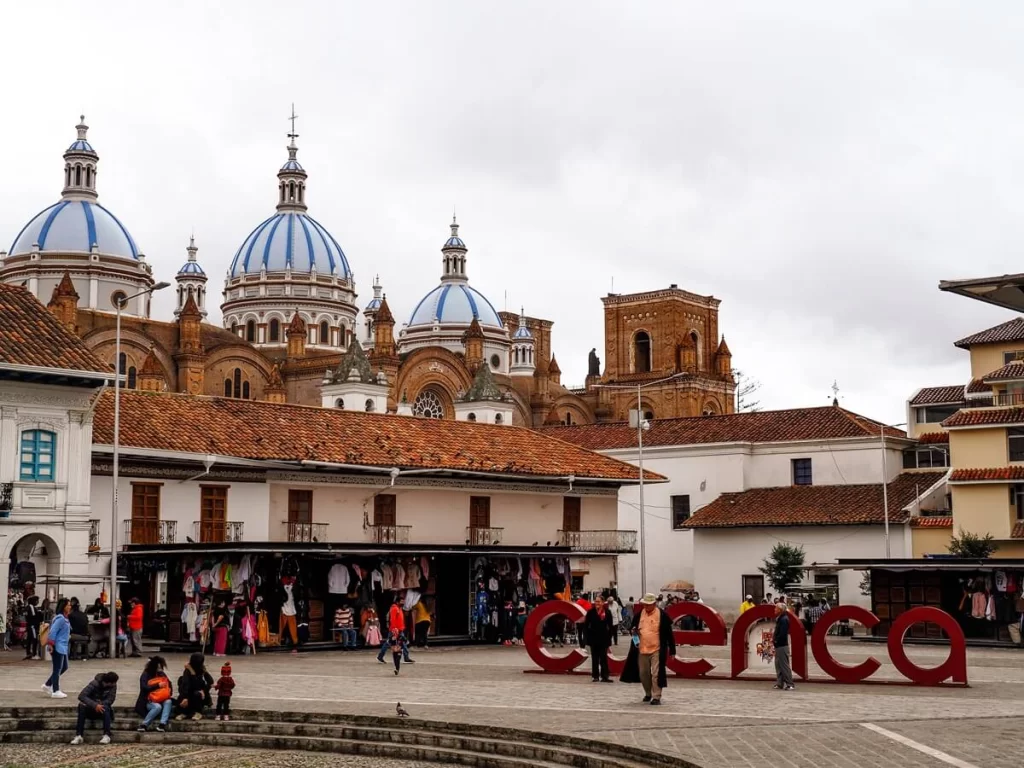
6. Browse the Artisan Market at Plaza de San Francisco
Just around the corner from the flower market you can find San Francisco square, filled with vendors selling clothes and souvenirs. We love browsing artisan markets and always seem to find something to purchase. Between the stalls, you can also visit some independent shops selling handmade items like jewellery and other arts and crafts.
This is also where you can find the giant Cuenca sign (Letras Cuenca) with the iconic blue domes of the New Cathedral in the background. Make sure to snap that ‘mandatory’ photo.
7. Visit Mercado 10 de Agosto
After the artisan shops you can also visit a more food focused market in the Historic Centre of Cuenca. The best one is Mercado 10 de Agosto, located a bit further south of Plaza de San Francisco.
If you’ve been to a few markets in Ecuador or South America already, then you know what to expect from a visit to Mercado 10 de Agosto. You’ll find plenty of fruit and vegetable stalls, with vendors also selling fresh juices. As always, there’s also a ‘restaurant’ section where you can taste some delicious traditional dishes.
The most unique feature of this market is that there’s a section where you can get a ‘limpia’ or a traditional cleansing. It costs a few dollars and the healer will get rid of all of your negative energy using herbs and plants.

8. Stroll Along Tomebamba River
If you’ve had enough of the hustle and bustle, then make your way towards the southern edge of the Historic Centre. Acting as a natural divider between the more modern Cuenca and the Centro Historico, walking along Rio Tomebamba is one of the most relaxing activities in the city.
The river starts in Cajas National Park, which is one of the best day trips from Cuenca. It runs through the middle of Cuenca before merging into the Amazon river and the Atlantic Ocean.
There’s a wide footpath you can use that you’ll be sharing with plenty of locals who cycle or run along the river, especially on weekends. The treelined river bank is also broad enough for people to use it as picnic spots. So, if you’ve bought something at the markets you can sit down and enjoy it here. There are also quite a few cafes along the river you can sit in as you make your way down.
If you follow the river towards the south-eastern corner of the Historic Centre then you’ll eventually end up at Pumapungo Museum.
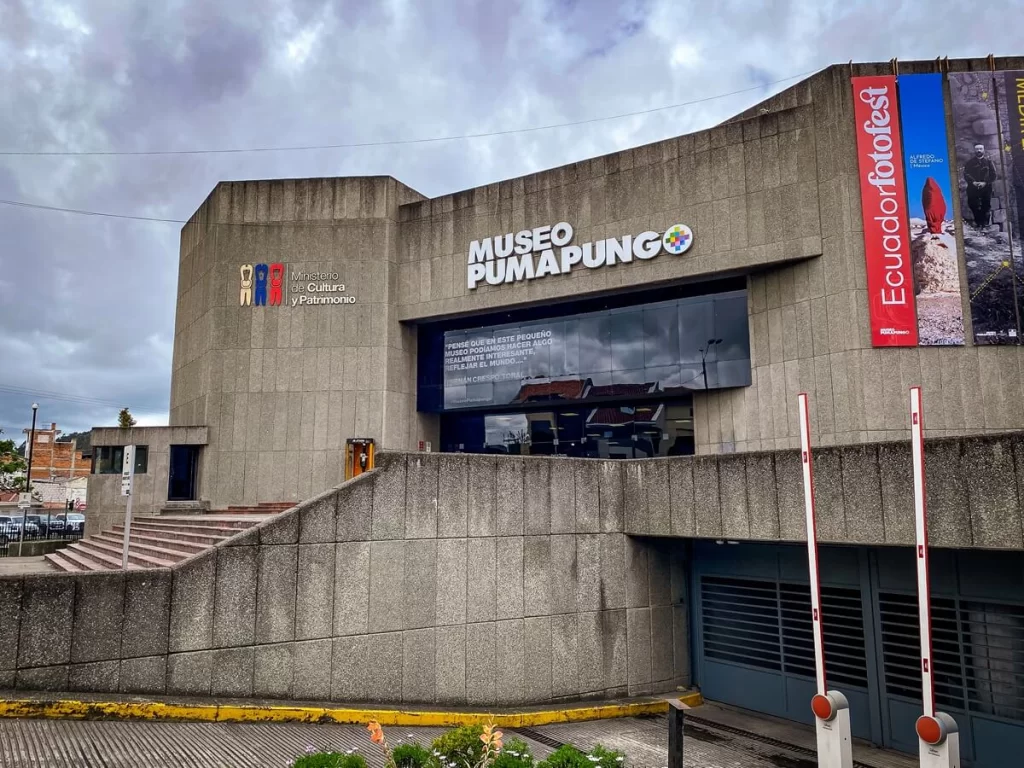
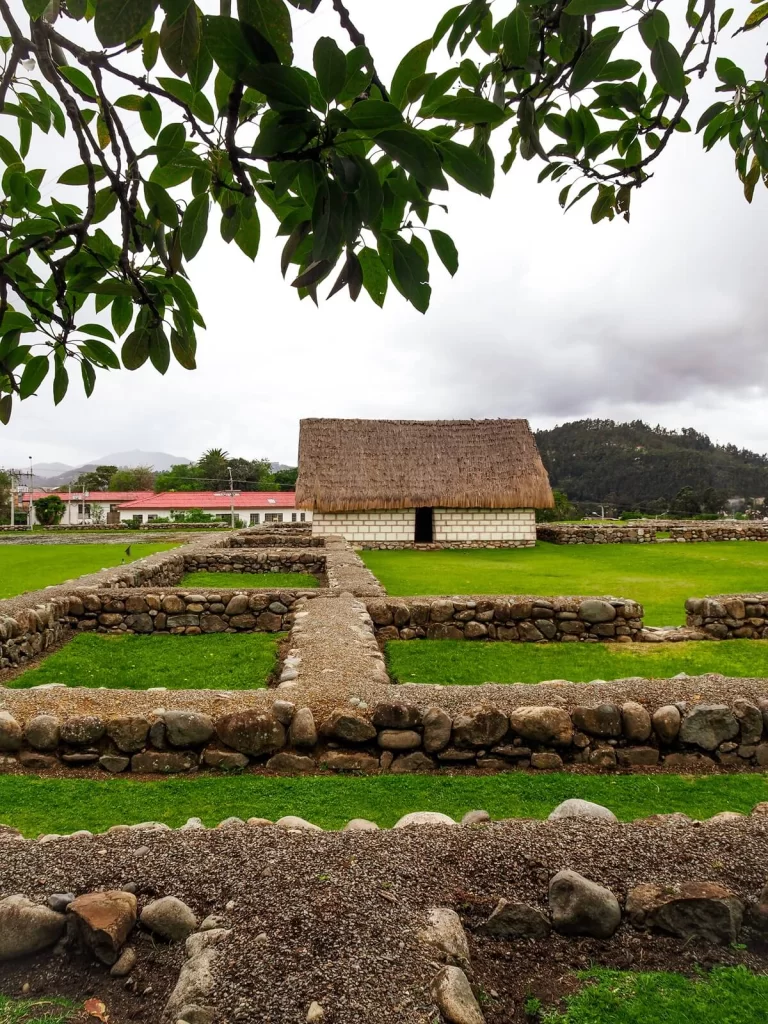
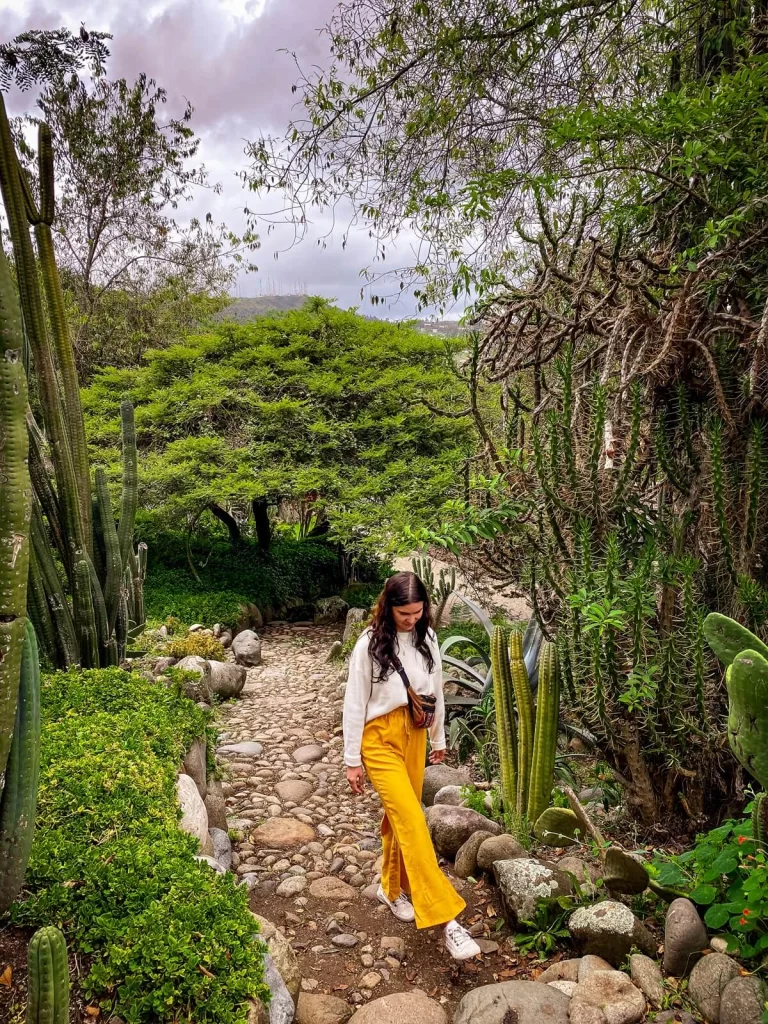
9. See an Inca Ruin at Pumapungo Archaeological Park
Pumapungo Museum displays ancient artifacts and also tells the history of the indigenous people of the area. They even have a collection of shrunken heads! It’s definitely a great museum to visit during your time in Cuenca. Plus, it’s free to enter, so you really can’t go wrong. Just note that you won’t be allowed to take photos indoors and it’s closed on Mondays.
Behind Pumapungo Museum is an Inca Ruin that you should check out whilst you’re there. The ruins are believed to be part of the ancient city of Tomebamba, which was founded in the 15th century. However, many people believe that before the Inca built that city, there was another inhabited by the Cañari people. The Spanish conquerors used a lot of the stones from Tomebamba to build Cuenca, but luckily the foundations still remain.
Its actually a way bigger site than we initially thought and they even have a botanical garden where the Inca used to grow their crops. Luckily, you can use your camera outside!

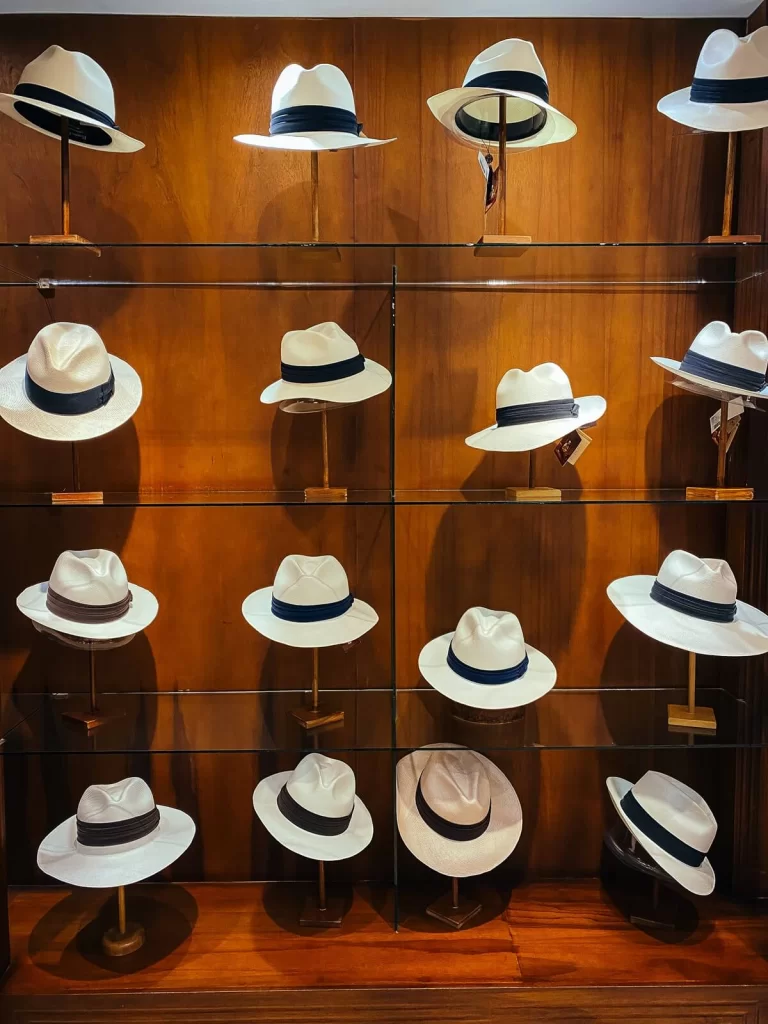
10. Visit the Panama Hat Museum
Despite the name, ‘Panama Hats’ are originally from Ecuador, not Panama. Don’t worry, we didn’t know this before our visit either.
The confusing name comes from the 1900’s when the Panama Canal was being constructed. Construction workers used the hats to protect themselves from the sun but the name was only introduced after some photos of US President Roosevelt wearing the hat on his visit to the canal were published. Since then, these hats, worn by many famous people over the years, have been known as Panama hats.
Cuenca eventually became the largest producer of Panama hats in the country. Even though Montecristi, located just outside of Manta, claims to be the actual birthplace of the hats.
You should definitely visit one of the museums to learn about the history and process of producing these iconic straw hats. You can visit Museo Del Sombrero De Paja Toquilla which is located in the Historic Centre. For a more insightful visit, we recommend visiting Homero Ortega Hats Museum, located slightly outside of the city centre.
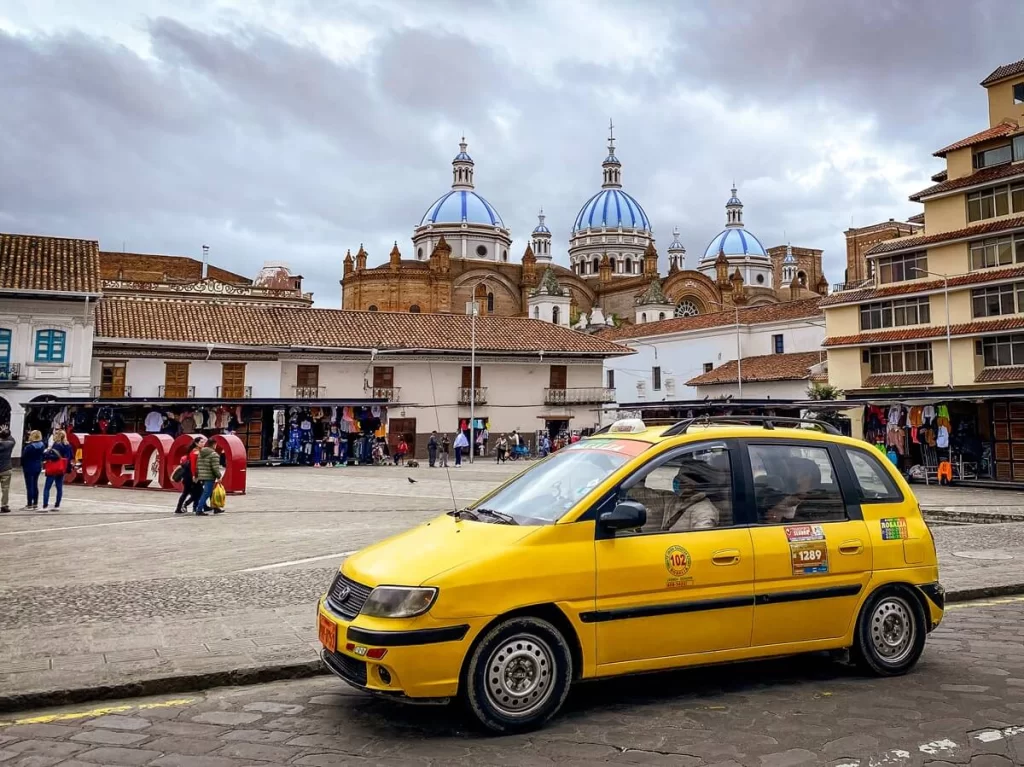
How to Get to Cuenca, Ecuador
Bus: The most affordable way to get to Cuenca is by public bus. You can reach Cuenca from many popular destinations such as Quito, Guayaquil, Baños and Riobamba. You can get to Cuenca from most places in a few hours. The main bus terminal is called Terminal Terrestre, and is located pretty close to the airport. You can take a taxi or local bus from there to the historic centre. You can find buses from Quito, Guayaquil and Baños on this website.
Flight: You can also fly to Cuenca from Quito or from Guayaquil. The city is served by Mariscal Lamar International Airport (CUE), located quite close to the centre. Normally the flight time is very short, only between 30 minutes to an hour. From the airport you can get a taxi or a local bus to Cuenca’s city centre.
Find Flights to Cuenca✈️
How Long Do You Need in Cuenca
Since there is plenty to do in and around Cuenca, we recommend staying a minimum of 3 days. You can easily spend one full day just wandering around its historic centre. There are also plenty of other activities that would take at least half a day. For example, you would need a good chunk of a day to visit Cajas National Park. If you want to visit places such as Amaru Biopark, or complete a spa circuit, then you would need to allocate around 3 to 4 hours for each of these activities.
As you can see, you would really need at least 3 days to fit everything in. If you don’t want to rush your visit then you can stay even longer. Of course, if you want to skip an activity then you can see the highlights of Cuenca in about 2 full days.

Where to Stay in Cuenca
Since Cuenca is on many travellers itineraries, not to mention also being a popular city for expats and digital nomads, it has a variety of accommodation options.
If you only have a few days in the city, we definitely recommend staying somewhere in the city centre. It’s a lovely area and you’ll be close to many of the main attractions, restaurant, cafes and even the bus terminal and airport.
Below are some good hotel and hostel options depending on your needs and budget:
Is Cuenca Safe to Visit
We personally found Cuenca safe. It’s actually known to be safer than Quito. That being said, we were still careful walking around with our cameras and phones and always put them away when we didn’t need them.
Pickpocketing and other petty crime can happen just like in any other big city. The only thing you can do is to stay vigilant, especially in more crowded areas and on public transport. Perhaps use a money-belt that’s more concealed. During our Amazon Rainforest visit, a lovely couple told us that someone stole their small handbag with their phones and money in it whilst they were in Quito.
Protests due to political unrest can also happen across the country. Always check the government’s website and local news for up to date information on the current situation.
We never go anywhere without travel insurance, which can protect you against a lot of unfortunate events that can happen during your travels. We use SafetyWing, but there are plenty of other travel insurances to choose from depending on your needs.
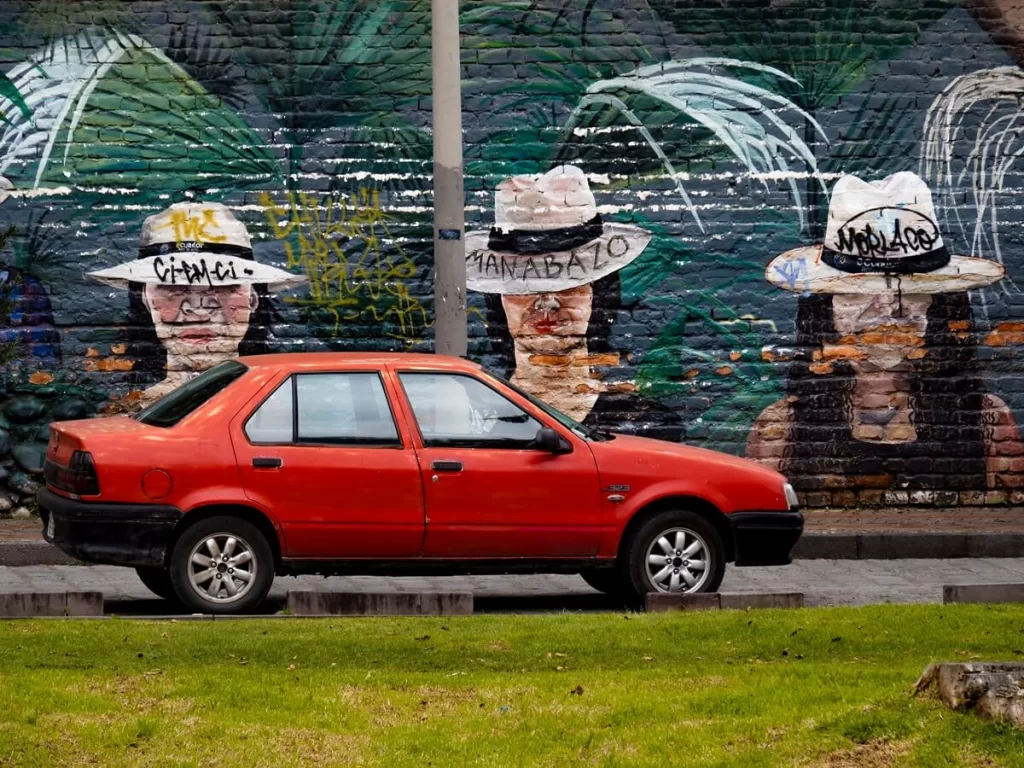
Final Thoughts on Things to Do in the Historic Centre of Cuenca
As you can see, there’s plenty to do just in the Historic Centre of Cuenca. We definitely enjoyed walking around the city, and sometimes didn’t even feel like we were in South America. The highlights for us were definitely the views from the New Cathedral and Calderon Park, which was so much greener than we’d expected. It actually became our second favourite main plaza after the one in Arequipa, Peru.
We also enjoyed taking a stroll down Tomebamba river and were super impressed by the scale of the Inca site right in the middle of Cuenca. Even though we couldn’t fit a Panama hat into our backpacks (let alone afford one!), we had a ton of fun trying on some pretty pricey ones.
Have you ever visited Cuenca in Ecuador? If so, what did you do in the historic centre of the city? If not, would you visit Cuenca? Let us know in the comments below.
Now, let your adventure begin,

Our Top Travel Resources
Accommodation: For hotels we always use Booking.com and Hostelworld for hostels. We also book longer stays on Airbnb or Vrbo.
Flights: To find the best flight prices we always check Skyscanner, Google Flights or WayAway. Then we also check the airlines’ websites too for comparison.
Car Rentals: We use Discover Cars when we want to rent a car as it compares local, national and international companies.
Activities: If we book organised tours we always check either GetYourGuide or Viator.
Foreign Currency: Whenever we can we prefer to pay in local currency and for that we always use our Wise card. We can easily withdraw money from the ATM or pay by card at most shops and restaurants.
Travel Insurance: We never go anywhere without travel insurance. You never know what will happen on your trip, so good travel insurance like SafetyWing can protect you in case of injury, illness, theft and cancellations.
eSIM and VPN: To get data abroad we use Airalo which is an app that allows you to download a prepaid eSIM to your phone in over 190 countries. Make sure to have a VPN to avoid hackers accessing your personal data when using public WIFI. We use Surfshark which is the only VPN that offers one account on unlimited devices.



